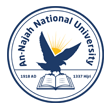Abstract
Congenital diverticula of the gall bladder are considered one of the rarest congenital anomalies of the gall bladder is rarely discussed in the literature, with the incidence esti-mated to be about 0.0008% of all resected gallbladders. It has an important and distinct anatomical and clinical entity with significant clinical implications. It poses a diagnostic challenge for radiologists and surgeons as it should be differentiated from other types of congenital anomalies and pathological states of the gall bladder. Furthermore, the associa-tion of diverticulum with several pathological problems of the gall bladder has been report-ed in the literature including calculous cholecystitis, cholecystitis cholelithiasis, recurrent cholangitis - and carcinoma of the gallbladder. In addition, it might press upon the adjacent structures such as the duodenum or stomach. Rupture is a rare complication. In this report, we present a case of congenital gallbladder diverticulum that has been initially misdiag-nosed as GB lymphangioma and describe our clinical, radiological, operative, and histo-pathological findings. A 33-year-old female patient was investigated for colicky abdominal pain of eight months' duration. Abdominal U/S showed multiple numerous septa inside the GB, minimal amount of sludge, with no stones. Abdominal CT scan, liver MRI, and MRCP showed that the GB is partially intrahepatic with numerous septated small cystic appearances inside, those features raising the suspicion of GB lymphangioma arising from the lymphatic tissue of the gallbladder wall. The decision for surgery was made, and while adequate surgery can be performed using a laparoscopic approach, we preferred to do open cholecystectomy to achieve complete GB resection and to assess the gallbladder for the presence of suspicious malignant features such as the presence of soft tissue components and hard consistency especially in the GB bed which is hard to assess laparoscopically. In-traoperatively, the GB wall was thin with a lobulated surface with several bulges sugges-tive of GB diverticulosis. The operation passed smoothly and the postoperative course was uneventful. The diagnosis of the congenital diverticulum was only confirmed by histology. The diverticulum of the gall bladder is an important and distinct anatomical entity with significant clinical implications. Difficulties are still faced in differentiating such rare gallbladder anomalies, it has been associated with several pathological problems in GB and adequate workup is required to differentiate congenital gall bladder diverticulum from oth-er underlying pathologies.
Digital Object Identifier (DOI)
10.59049/2790-0231.1069
Recommended Citation
Demyati, Khaled; Nayfeh, Asmaa; Abu Rass, Hanood; and Awadghanem, Ahmed
(2021)
"Congenital diverticulum of the gallbladder, a rare anomaly: clinical, radiological, operative, and histopathological features,"
Palestinian Medical and Pharmaceutical Journal: Vol. 7
:
Iss.
2
, Article 1.
Available at: https://doi.org/10.59049/2790-0231.1069


